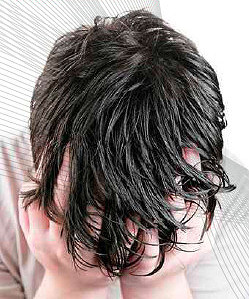Hot flushes and sweats during the menopause

This special form of sweating is a temporary symptom characterised by frequent hot flushes and outbreaks of sweating during the menopause in women. This sweating disorder should not be confused with climacteric (vs. climacteric) or thermoregulatory sweating.
The climacteric basically covers the period of hormonal change before and after the menopause. The well-known hormone oestrogen, which is responsible for the menstrual cycle, is reduced and the hormone level drops drastically during this stage of life.
Sweating as a result of hormonal changes
Hot flushes - wet hair and insomnia
It is not a disease requiring treatment, but a phase with temporary accompanying symptoms. However, the accompanying symptoms are very individual and vary in severity and intensity. The symptoms are usually subsumed under the term climacteric syndrome. Sweating and heat sensations are only some of the accompanying symptoms. Night-time hot flushes (cf. night sweats), accompanied by sleep disturbances and interruptions, can also result in sensations of discomfort and psychological changes.
Violent sweating attacks, locally on the hands, feet or under the armpits can occur, as well as dripping sweats on the head with wet hair and reddened skin. Flushes with heat sensations usually occur suddenly and then subside again after the phase of escalation.
The typical hot flushes are sudden upward or downward waves of heat ("hot flushes") that start from the neck, head or chest. At the same time, the affected person blushes and not infrequently the heart rate increases. The first sign of an approaching hot flush is usually a feeling of pressure in the head and an uncomfortable feeling. The actual hot flash then usually radiates from the face, neck or upper body in "waves". The hot flush, which can last on average two to three minutes, is immediately followed by sweating in the affected areas of the body.




